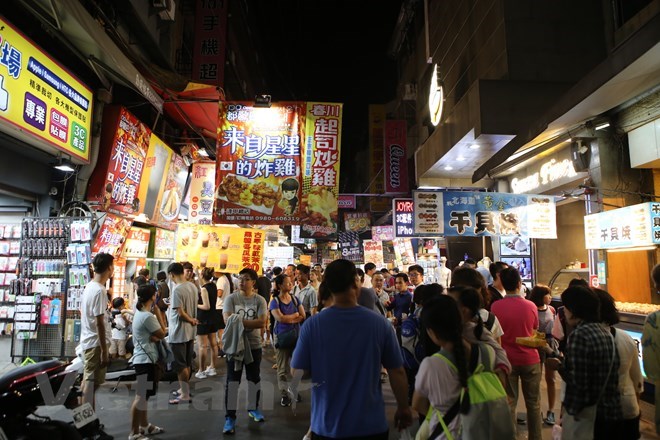
Vietnam welcomed more than 616,000 Taiwanese tourists in 2017, a year-on-year rise of 121.5 percent, according to the National Administration of Tourism.

A market in
Taiwan (China) (Source: VNA)
The number is expected to hit 800,000 in 2018, Cong Thuong
(Industry and Trade) newspaper reported.
Meanwhile, more than 380,000 Vietnamese tourists visited Taiwan (China) in
2017, up 94.94 percent year-on-year.
The Taiwanese tourism sector aims to serve some 700,000 Vietnamese
holidaymakers in 2018.
The outcomes are attributable to cultural similarities shared by the two
destinations, diverse landscapes and cooperation between travel firms of both
sides.
Besides, since a memorandum of understanding on tourism was signed between
Vietnam and Taiwan in 2012, Taiwan has issued favourable visa policies to the
Southeast Asian nation.
Taiwan is famous for Ali mountain (Alishan), Sun Moon lake, Orchid Island
(Lanyu) and the National Palace Museum, together with its culture and cuisine.-
Source: VNA
A diverse chain of eco-tourism and resort destinations concentrated in Hoa Binh city and the districts of Tan Lac, Da Bac, and Luong Son… Along with the launch of several key high-quality resort tourism projects, these developments have reshaped the landscape and enhanced the appeal of Hoa Binh as a travel destination.
Boasting diverse terrain, a mild climate, and rich natural resources, Cao Phong district is increasingly asserting its place on Vietnam’s tourism map, attracting both domestic and foreign visitors. The district is renowned for its stunning landscapes, majestic mountains, a crystal-clear hydropower lake, and the unique cultural identity of local ethnic groups.
With its pristine landscapes, unique cultural heritage of Muong ethnic minority, and an expanding range of visitor experiences, Tan Lac district of Hoa Binh has fast become a captivating destination for both domestic and international tourists.
Until now, Sung village in Cao Son commune, Da Bac district remains the only Dao ethnic community in Hoa Binh province to develop a community-based tourism model. Beyond its untouched natural landscapes, cultural identity serves as the cornerstone attraction for visitors.
Alongside the diverse cultural identities of the Kinh, Muong, Tay, Thai, Dao, and Mong ethnic people, Hoa Binh province is also renowned as the "capital" of the northwestern Vietnamese cuisine, offering unique and distinctive dishes. At festivals, during Lunar New Year (Tet), or on significant family or community occasions, special dishes are prepared, leaving a lasting impression on visitors.
A Phong Linh (Yellow Tabebuia) flower garden in Thang village, Thach Yen commune, Cao Phong district is currently in full bloom, drawing a large number of visitors.


